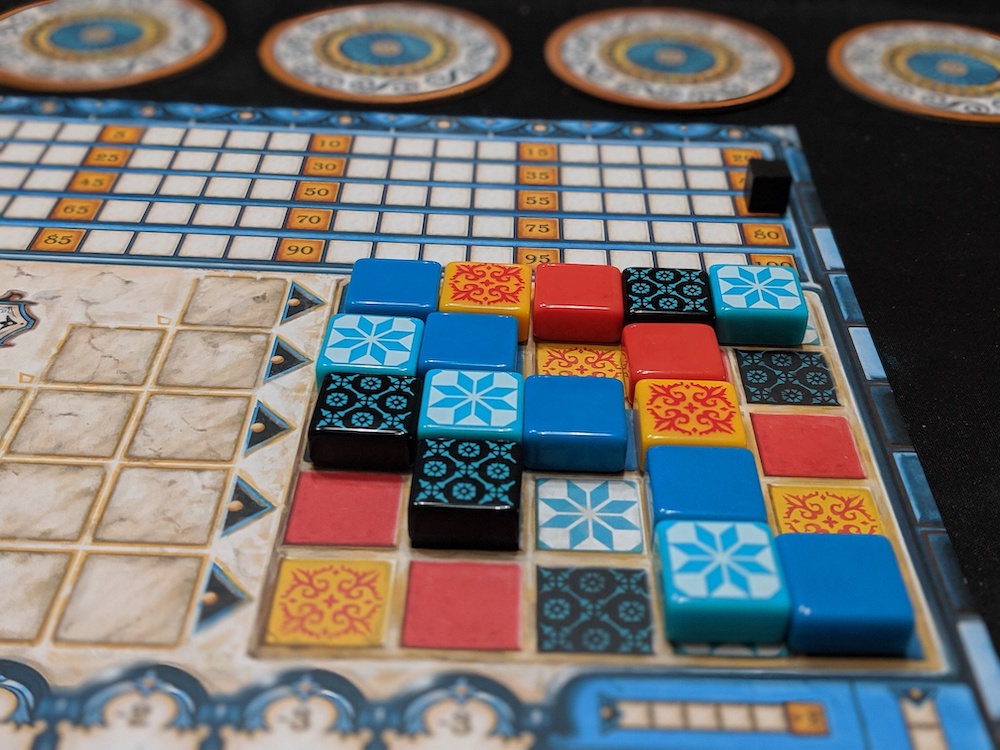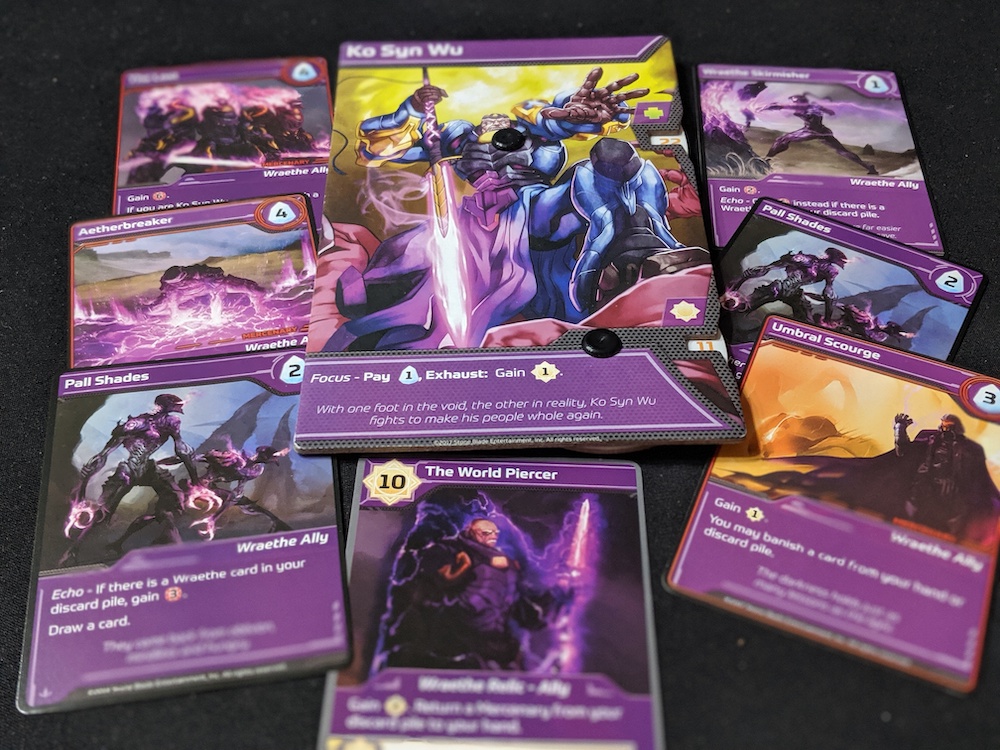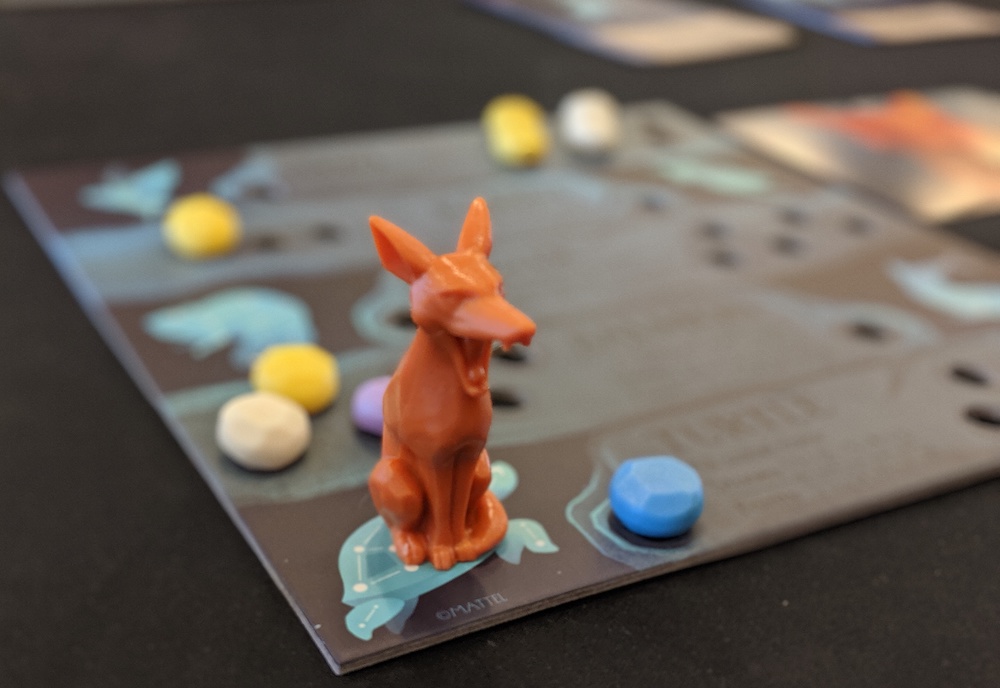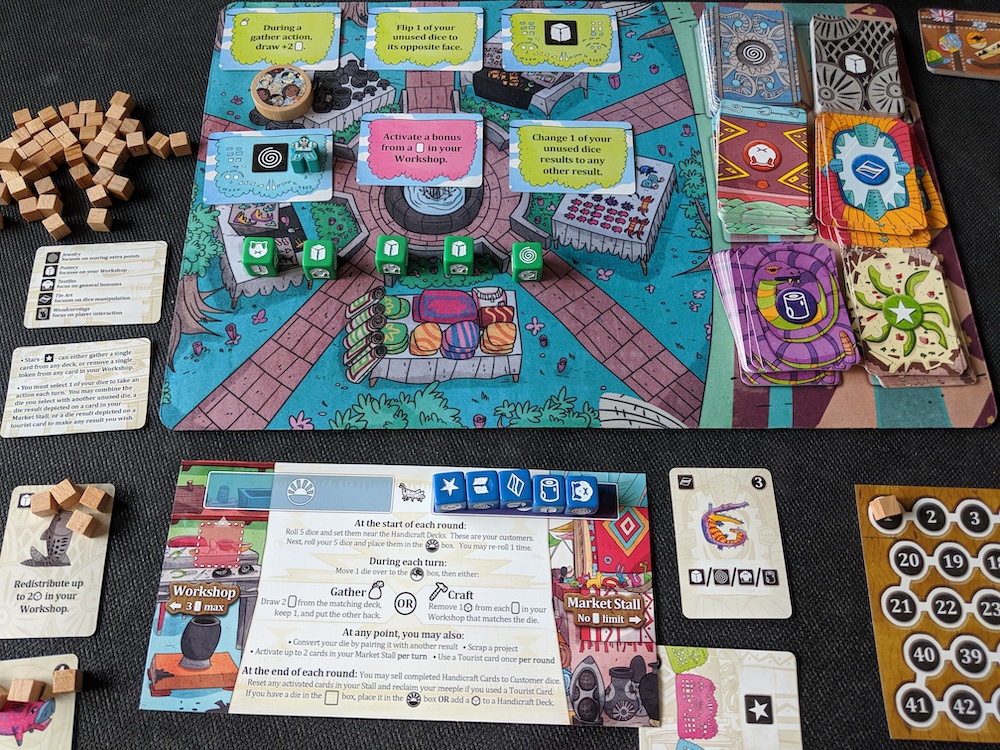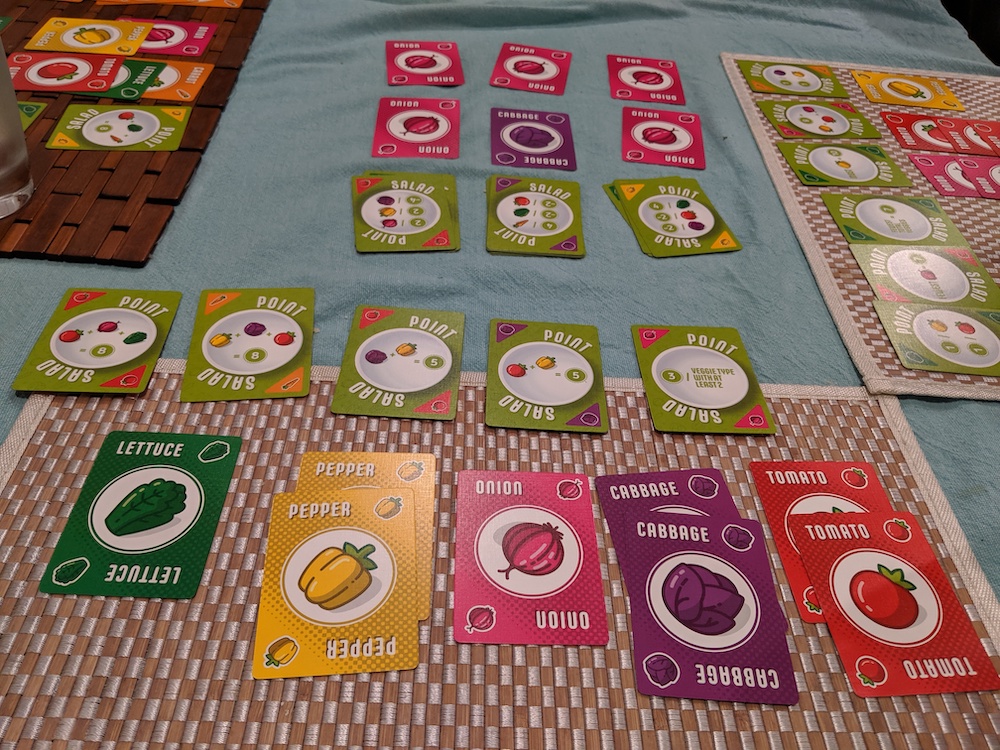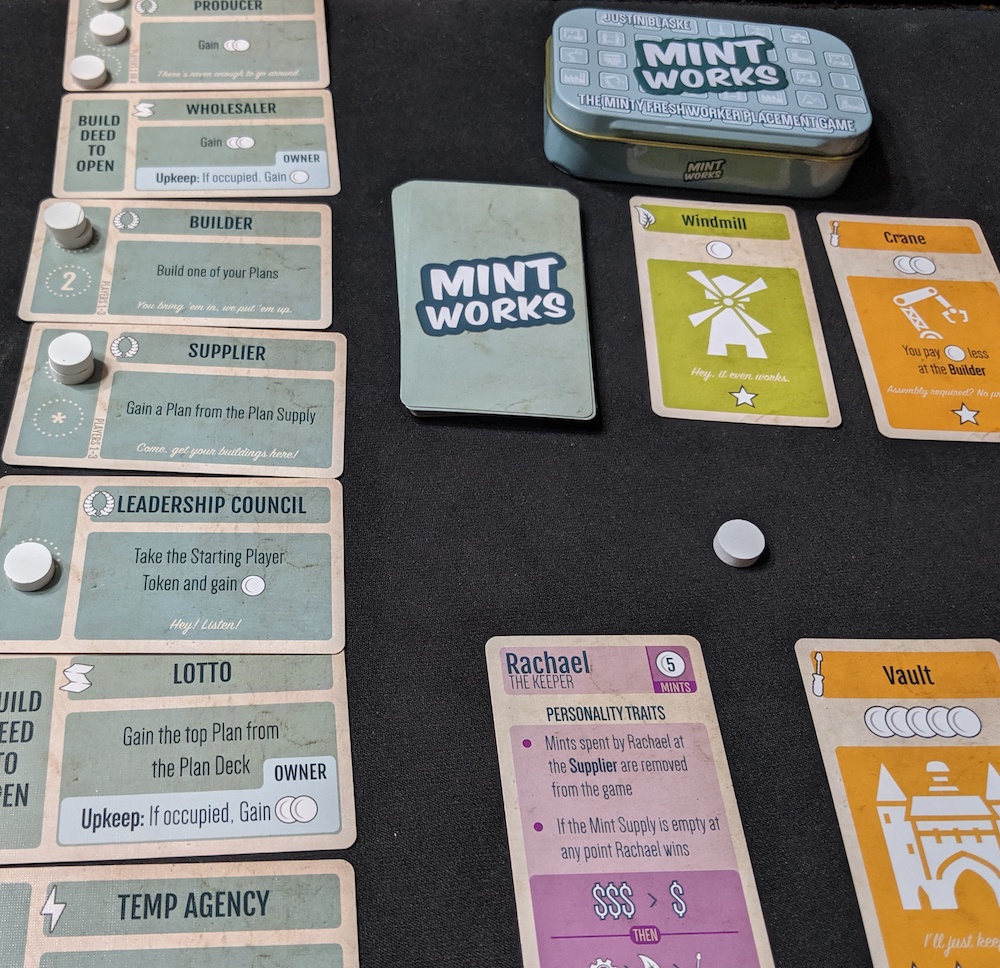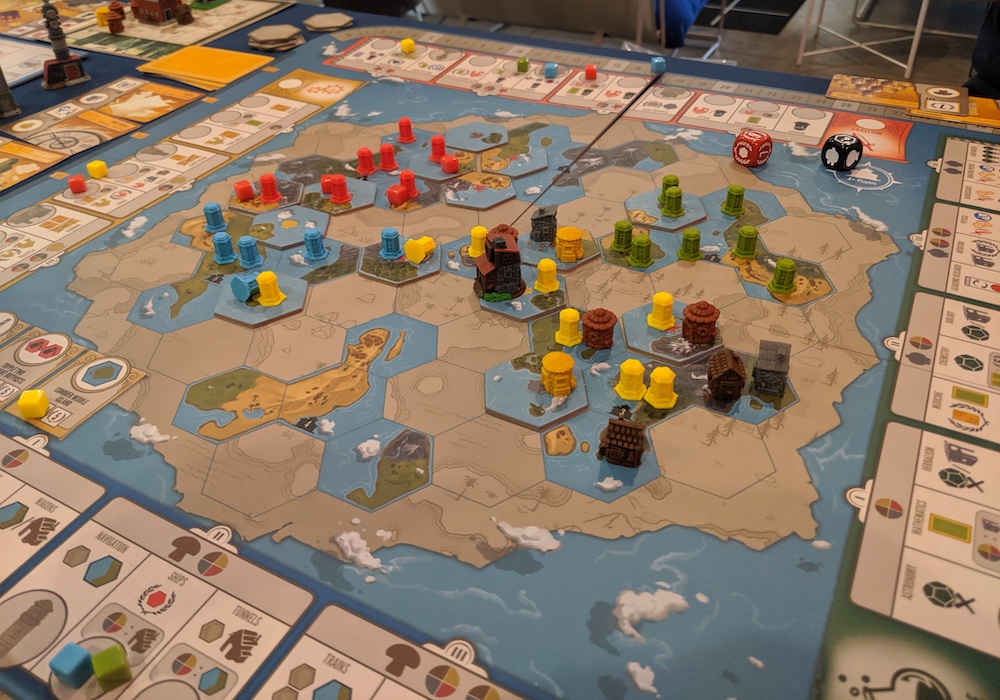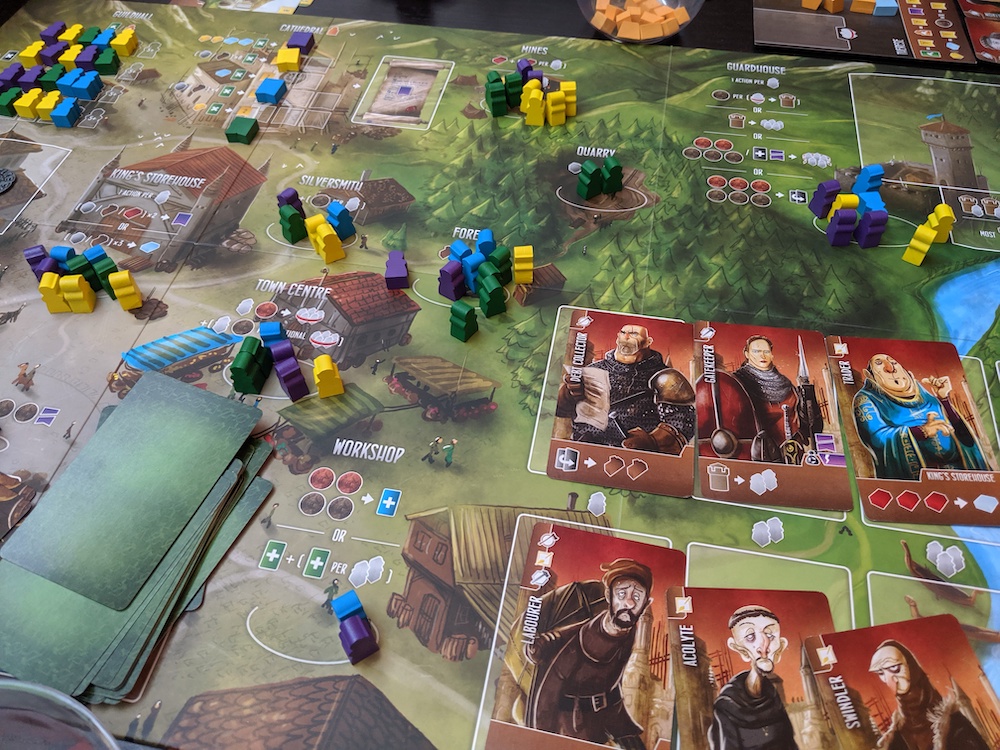I’m posting about a game every day in September! Here’s a link to yesterday’s post.
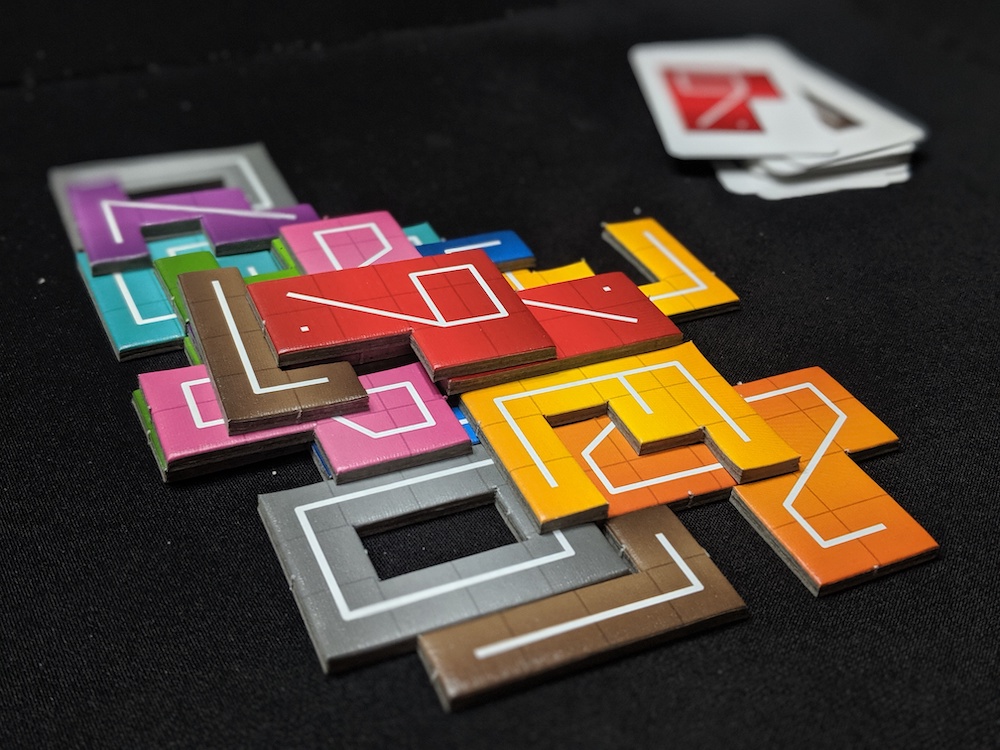
NMBR 9 was an instant favorite last year with my gaming buddies, non-gaming friends, and family. It’s like a jigsaw puzzle with a little math thrown in for scoring.
The numbers 0-9 are represented by funky shapes and there’s a deck of cards with two copies of each number. Each turn a random number is drawn and you have to place it in your playing area. You want to build your puzzle as high as possible since you’ll get more points the higher a number is.
In tonight’s solo game picture above, the number 9 is on the third level, so I scored 27 points since you multiply the level times the number you placed (the first level of numbers is worth nothing, the second level is multiplied by 1, the third level is multiplied by 2, etc.).
The only rules of placement are any piece you place must be adjacent to a piece already placed, and when you build anything on level two and above, your piece must rest on at least two different numbers. This is tricky since the numbers are so oddly shaped that you’ll often have spaces in between some and you can’t have any empty spaces below your pieces. When you go place the current number you’ll find yourself trying desperately to follow the placement rules, then grumbling when you have to place it one level lower than you wanted and then scoring fewer points.
So, it’s basically multi-player solitaire, but that’s fine by me. I love the challenge of trying to score optimally based on what tiles are randomly called out. It’s like bingo, but with far more satisying game play.

